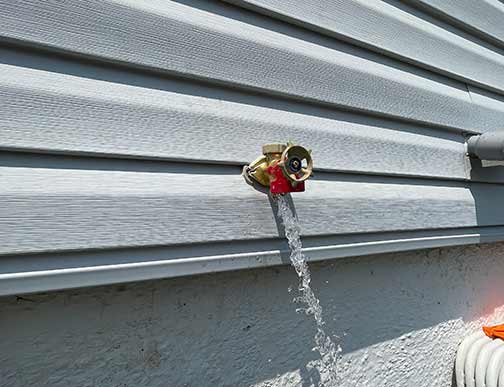
Replacing an outdoor faucet can seem like a daunting task, but with the right tools and a little know-how, it can be a relatively straightforward process. Whether you need to replace a worn-out faucet or upgrade to a more efficient model, this guide will walk you through the essential steps to help you tackle the job with confidence.
Gather the Necessary Tools and Materials
Before you begin, make sure you have all the tools and materials needed for the replacement process. Here’s a list of items you may require:
– Adjustable wrench
– Pipe wrench
– Screwdriver
– Teflon tape
– Replacement faucet
– Plumber’s tape
– Pipe cutter (if necessary)
– PVC glue (if necessary)
Turn Off the Water Supply
Prior to replacing the outdoor faucet, it’s crucial to turn off the water supply to prevent any accidents or water damage. Locate the main shut-off valve, usually located in your basement or crawl space. Close the valve by turning it clockwise until it is fully closed. Next, drain any remaining water from the system by opening a faucet at a lower elevation, such as a basement sink or an outdoor spigot.
Disconnect the Old Faucet
Start by removing any attachments, such as hoses or splitters, from the old faucet. To disconnect the faucet from the water supply line, use an adjustable wrench to loosen the hexagonal nut connecting the faucet to the pipe. Turn the nut counterclockwise until it is loose enough to remove by hand. If necessary, use a pipe wrench to hold the pipe steady while removing the nut.
Once the nut is removed, gently twist and pull the old faucet away from the pipe. Be cautious as there may still be some water remaining in the pipe that could leak out.
Prepare the Pipe for Installation
Inspect the end of the pipe for any sharp or uneven edges. If necessary, use a file or sandpaper to smooth out the surface. Apply a thin layer of plumber’s tape around the threaded end of the pipe to ensure a watertight seal. This step is particularly important for older pipes that may have corrosion or small cracks.

Install the New Faucet
Take the new faucet and align it with the threaded end of the pipe. Slowly twist the faucet clockwise onto the pipe, making sure it is securely tightened. Use an adjustable wrench to give it an extra quarter turn to ensure a snug fit, be careful not to overtighten as it may damage the faucet or pipe.
Test for Leaks
Now that the new faucet is installed, it’s time to test for any leaks. Turn on the water supply by reopening the main shut-off valve. Check for any signs of water leakage around the base of the faucet or where the pipe connects. If you notice any leaks, try tightening the faucet slightly, or if necessary, apply pipe joint compound or plumber’s tape for a better seal.
Reattach Hoses and Splitters
If you had disconnected any hoses or splitters before the replacement, securely reconnect them to the new faucet. Ensure they are tightly fastened for a leak-free connection. Consider using Teflon tape on the hose threads for added sealing.
Insulate the Faucet
To protect the outdoor faucet from freezing temperatures during winter months, it’s wise to insulate it. You can purchase foam faucet covers from a local hardware store or use an old towel or foam pipe insulation to wrap around the faucet. This insulation will help prevent frozen pipes and potential damage such as a burst pipe emergency.
To Wrap It Up
With these essential steps, you can confidently replace an outdoor faucet and enjoy the benefits of a properly functioning and leak-free fixture. Remember to gather the necessary tools and materials, turn off the water supply, disconnect the old faucet, prepare the pipe for installation, install the new faucet, test for leaks, reattach hoses and splitters, and finally, insulate the faucet for protection. If you encounter any difficulties or feel unsure about any step, contact a plumber near you for assistance.

